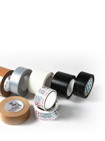 Loading... Please wait...
Loading... Please wait...How PPE Can Help Prevent Infection
Posted by Alan on 10th Feb 2021
Personal Protective Equipment (PPE) are clothing, gloves, face shields, goggles, helmets, ppe3 masks, respirators and other protective gear used to prevent potential injuries or spreading of an infection. In most cases, PPEs are worn in hospitals, labs, or construction places. This article aims at explaining how PPE can be used as an infection-control technique and how to handle them with some types of PPE available to order here from Trio Plus.
Types of PPE

- Sticky Tack Mats
They are also referred to as sticky mats and are put on workplace entrances and exits with an aim of removing contaminants from people's shoes and wheeled carts. Mostly, they are used in construction sites and cleanrooms. Basically, the function of sticky mats is to prevent contaminants from entering the site and hazardous substances from leaving.
- Masks
Masks are used to prevent viral communicants if sprayed in the air by an infected person. Of course, in order to achieve the desired effect, they must be used in combination with other hygiene practices. Types of masks include cloth masks, surgical face mask, ppe3 masks, N95 masks.
- Sanitisers
Sanitisers are used to kill contaminants such as germs. Commercial sanitisers kill up to 99.9% of germs, which makes it an ideal alternative to using soap.
- Gloves
Gloves are worn to prevent being exposed to blood and other bodily fluids or when carrying contaminated materials. If worn inappropriately by a health worker, gloves can result in transmission of communicants to vulnerable patients.
Moreover, PPE are used to prevent high-risk patients from contracting contaminants brought in by healthcare workers and visitors. To keep the risk of contracting infections at the minimum, PPE are used with other practices of infection control such as covering sneezes and coughs, and regular cleaning of hands using alcohol-based sanitisers.
After-Use
After using PPE, it should be removed properly and disposed in a safe place. This is to prevent the wearer and people within his or her vicinity from being exposed to the contaminants.
The choice of whether to wear PPE or not depends on the risk level to and from the victim. If worn properly, they prevent communicable materials such as bacterial and viral contaminants from entering your body through the mouth, nose, skin, eyes, and other mucous membranes. The PPE acts as a barrier which stops the transmission of the infectious material from body fluids and respiratory discharges.


